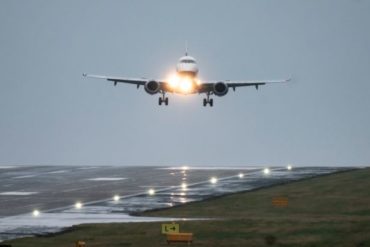Ukraine’s drone attack against Russian airfields was audacious and daring. But most of all, it was meticulously planned and flawlessly executed.
Kyiv struck where it could make a difference, damaging or destroying military aircraft that Moscow has been using to terrorize Ukrainian civilians with near daily aerial attacks.
The Ukrainian Security Service said 41 Russian aircraft were hit, including strategic bombers and surveillance planes, although it is unclear how many were taken completely out of action.
Justin Bronk, a senior research fellow at the Royal United Services Institute in London, said the attack was “a stunning success for Ukraine’s special services.”
“If even half the total claim of 41 aircraft damaged/destroyed is confirmed, it will have a significant impact on the capacity of the Russian Long Range Aviation force to keep up its regular large-scale cruise missile salvos against Ukrainian cities and infrastructure, whilst also maintaining their nuclear deterrence and signaling patrols against NATO and Japan,” he wrote in a note.
This is what we know about how the attack unfolded.
The attacks targeted four airfields deep inside Russia, with the farthest one, the Belaya base in Irkutsk region, some 4,500 kilometers (2,800 miles) from Ukraine’s border with Russia.
The other targets included the Olenya base near Murmansk in the Arctic Circle, more than 2,000 kilometers (1,200 miles) from Ukraine; the Diaghilev airbase in Ryazan Oblast, some 520 kilometers (320 miles) from Ukraine; and the Ivanovo air base, which is a base for Russian military transport aircr
It’s these huge distances from the border with Ukraine that likely made Russia complacent about protecting the sites.
Its most prized aircraft at the Belaya base were regularly parked in plain sight in the airfield, clearly visible in publicly available satellite images – including on Google Maps.
aft, some 800 kilometers (500 miles) from the border.
A visual shared by the SBU, Ukraine’s security agency, also showed another base in the eastern Amur region as a target. It is not clear whether an attack on this base failed or was aborted.
Moscow likely believed the distance itself was enough to keep the aircraft safe from Ukrainian attacks.
Russia maintains air superiority over Ukraine and while Kyiv’s allies have supplied Ukraine with some long-range missile systems, including US-made ATACMS and British-French Storm Shadows, neither has the range to strike this deep inside Russia.
Ukraine has been using drones against targets inside Russia, including in Moscow, but the low speed at which they travel makes them relatively easy for Russian air defenses to strike them.
This is where the audacity of the attack really played out: rather than trying to fly the drones all the way from the border, Ukraine managed to smuggle them right next to the sites it wanted to target and launched them from there.
Russia’s radar and air defenses at these bases were not prepared for such a low-altitude and sudden attack.
The only effective way to stop an attack like this is with heavy machine guns. Russia has been using these against Ukrainian sea drones in the Black Sea.
But these were either not available or not deployed quickly enough at the air bases targeted by Ukraine on Sunday – most likely because Russia simply didn’t foresee this type of attack.
CNN was able to verify and geolocated photos and videos from the scenes, confirming their locations near the bases.
Russia’s Defense Ministry confirmed in a statement that the attacks – which it called “terror attacks” were launched from the vicinity of the airfields.
Ukraine’s President Volodymyr Zelensky said 117 drones were used in the operation.
According to the SBU, the drones were smuggled into Russia by its operatives. At some point, likely while already in Russia, the drones were then hidden inside mobile wooden sheds.




